| Preparations:
The main fort that protected Bergen was Kvarven fort. Built in 1899. At a weapon Inspection in 1936 it was decided that the fort was within an acceptable state to defend its city. In April 1940 the fort had 3 x 21 cm guns, 3 x 24 cm howitzers, 2 x 75 mm AA guns, 3 x 7,92mm AA machine-guns and 2 x 110 cm searchlights. 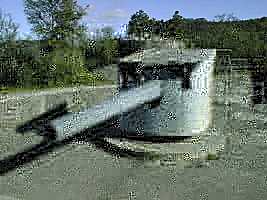 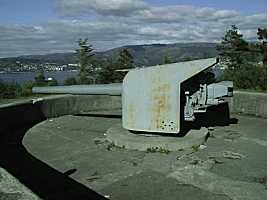
One of the guns at Kvarven in restored condition. * On the 8th April 1940, 279 soldiers and 33 officers were manning the fort, theiraverage age was 40 . There were no reserves, and some of the men had to endure 3 day watches before they were relieved. The military training was insufficient, and the fort had no units prepared for close defence. * 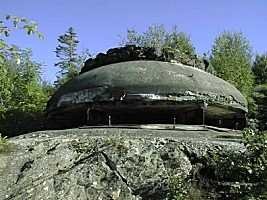
One of the watch towers at Kvarven. These have metal hatches, that in closed position made these towers a very safe place to be during air/sea attack. At 02.14, 9.april 1940, Lerøy fort (South of Bergen) reported that they were in action against invading warships, Kvarven fort was by now alerted, and its commander, Willoch was informed that seven unidentified warships were on their way to Bergen. Willoch ordered that the torpedoes were to be prepared and made ready for launch. The guns on both Kvarven and Hellen fort (A minor fort on the other side of the harbour.) were loaded. (I must include in this story that the guns at Kvarven fort had a limited traverse, this would imply that the target would be inside the reach of the guns for only about 3-4 minutes.) The crew at Kvarven fort waited for their invaders to come, but they did not show up at the calculated time. The Germans where actually busy transferring infantry to smaller landing craft, to attack Kvarven from the West side, later on, the ships would disembark more infantry on the East side of the fort, and completely surround it. At 03:50 the crew on Kvarven spotted two merchant ships rounding the headland of Godvik, and hesitated to open fire. The merchant ships were actually armed German trawlers, "Schiff 9" and "Schiff 18". They where followed by the cruiser "Köln", the torpedo boats "Leopard" and "Wolf", the artillery ship "Bremse", the auxiliary ship "Karl Peters", the cruiser "Königsberg" and a couple of smaller MTB`s. 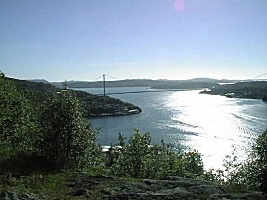
This is the view from Kvarven towards the headland of Godvik. Just behind the trees in the foreground, a couple of oiltanks is visible, It was here the Germans put ashore one unit that was to take Kvarven from the westside *
Königsberg managed after a lot of struggle to anchor before it hit the cliffs at Oldernes.(Königsberg was sunk because of heavy damage inflicted on her by British aircraft the next day.) Hellen fort was now ready to pound her guns at the warships, and fired several shots at "Köln". The range had to be estimated from this fort too. All shots missed, and two of the three guns broke down due to technical problems, the last gun received the order to cease firing just as it was beginning to range in on the ships, now clearly visible. The order came as a result of a misunderstanding, and nearly two hours later the fort was again given the order to continue firing! None of the shells from Hellen found its target, and Hellen was shortly after brought to silence by six German bombers. The torpedoes at the torpedo battery were missing their fuses and gyroscopes, and could not be used. The Norwegian torpedo boat "Brand" was hiding in Gravdalsbukten near the east side of Kvarven. The range to the German Warships was 700-1000 meters, and one or several hits would have been assured, still the commander chose to abandon his ship because he felt that the chance of success was so minimal that he would not risk it! The Germans captured his ship intact. Meanwhile the infantry disembarked on the West and East side of Kvarven and were able to take Kvarven fort. At 07:00 Kvarven surrendered. Only two Norwegians were killed, one of them probably by mistake by other Norwegian soldiers , and the other by the Germans, when failing to stop when ordered as he tried to reach his post at the torpedo batteries. One have to include that the failure and mistakes which occured at Kvarven fort, came as a result of little or no training, fresh and "green" gun crews, and old equipment. The commandant Willoch probably did the best he could, considering the limited resources he had at his disposal. 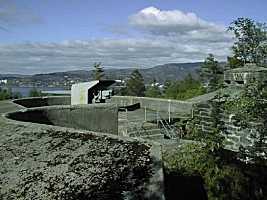
You can clearly see how this gun was placed on a forward facing slope, to make it harder for the invaders to hit their mark. In the foreground, you can see an anti-aircraft gun emplacement, and on the right side, behind the gun, a well armoured command post. |
